Kids study room ideas – 10 designs that are part practical, part playful
These kids study room ideas will merge homework and playtime seamlessly

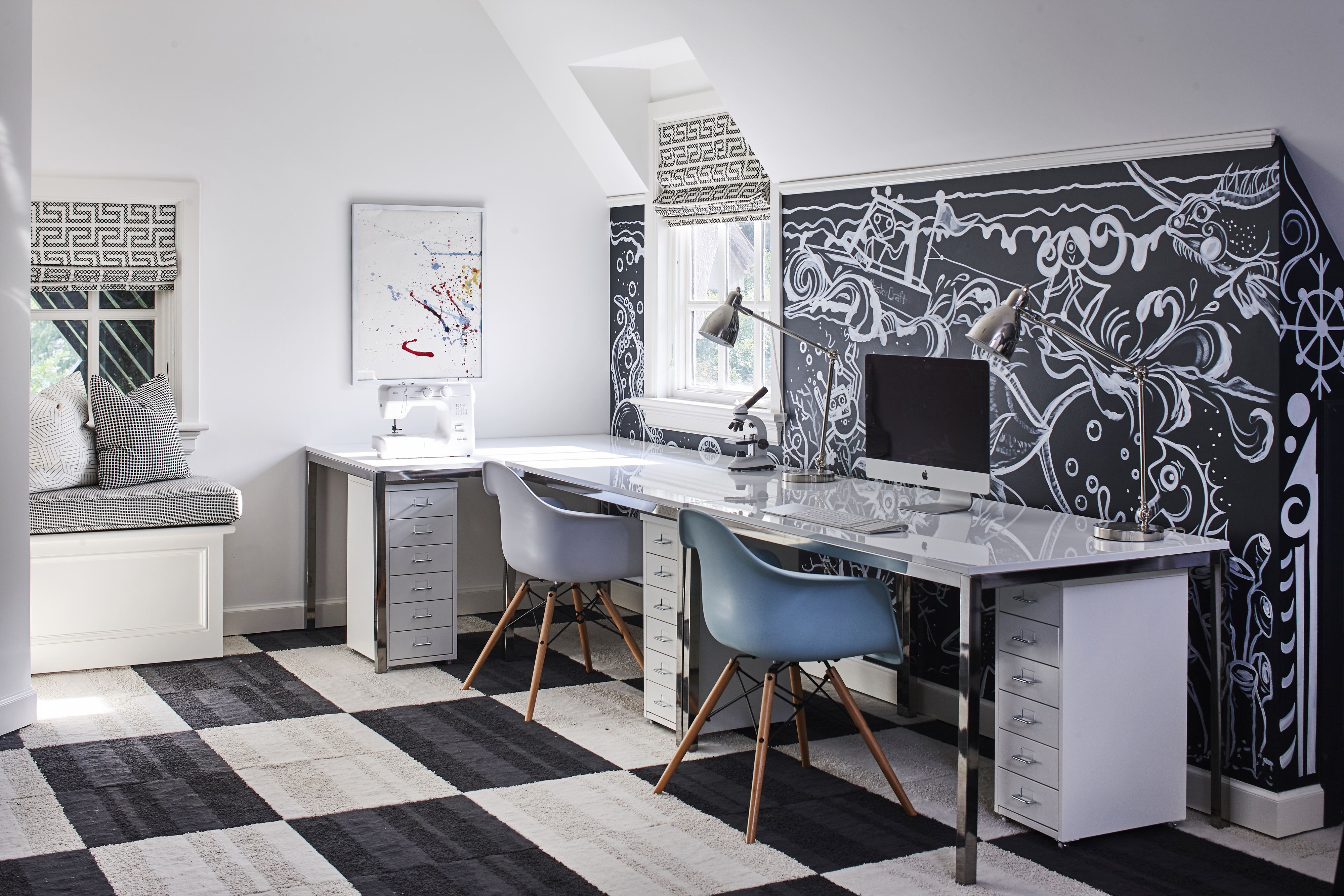
Kids study room ideas can be tricky to get right. You want the area to encourage the little one to focus, but you don't want the space to be so drab that your child hates spending time there. Plus, it needs to be extremely practical, filled with great storage ideas and functional elements. Plus be an area that is always organized.
If your home can be distracting, and you're having trouble luring your kids to finish their assignments, then it's time to reconsider your playroom ideas to make sure it includes a space to get homework done.
Thankfully, there are several useful, practical, and easy-to-implement tricks and ideas for the study area, so homework feels less of a chore, and more of a joy. Here, interior designers give us their best tips.
10 kids study room ideas that focus attention on work and play
Whether you've got a dedicated space for a study room, or you're setting up a desk in a kid's room, creating a designated distraction-free zone to ensure study time is always productive can be helpful.
If the room has access to natural light via a large window, it would be best to place the study table and chair there. Even a little reflected natural light can bring warmth and vitality to a room, and energize your child mentally. Plus it averts any eye stress while reading.
1. Make a kid's study a fun space
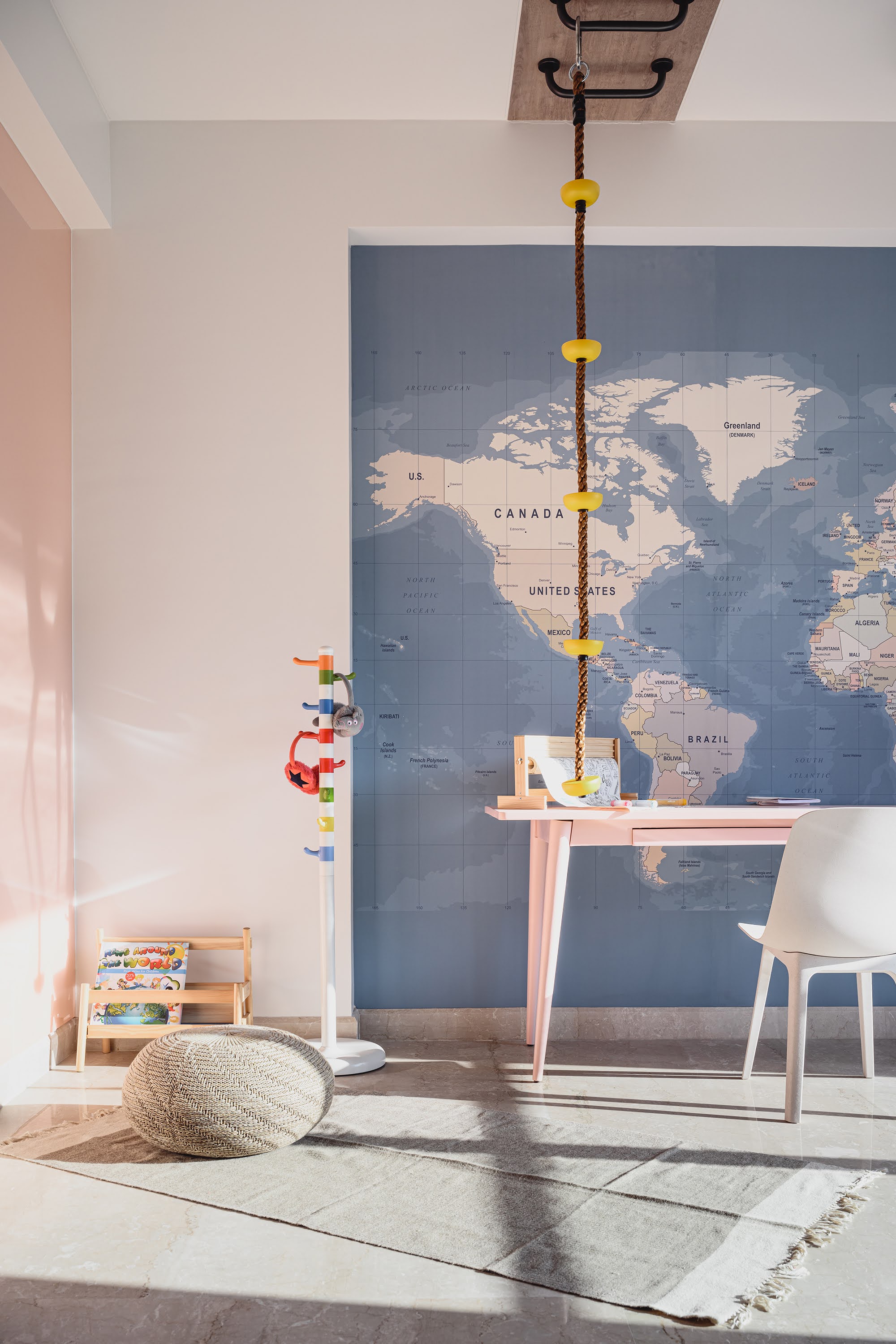
If you're wondering how to design a kids' room for younger children, it's important to make sure any space used for learning is fun too. Adding playful elements like a swing, a ladder, or a hammock makes spending time indoors fun, and you can supplement this with space for reading, arts and crafts too.
'We designed this kid's adventure room next to the study with a large backdrop of the world map and a pink desk,' says Prashant Chauhan, founder of Zero9. 'The room is kept almost open with absolutely no furniture to allow more playful and flexible space.'
The Livingetc newsletters are your inside source for what’s shaping interiors now - and what’s next. Discover trend forecasts, smart style ideas, and curated shopping inspiration that brings design to life. Subscribe today and stay ahead of the curve.
'A reading corner, a stacked art material closet, and lots of space to pin their artworks have been carefully crafted,' Prashant adds. 'The highlight of this room is the monkey bar that allows the kids to have all the fun may miss out on when the weather is unreasonable.'
2. Set up a twin desk

If you have kids that are in a shared room, why not set up twin desks for study? In a shared space, kids prefer to personalize their space with their things. Allocating a desk to each child will give them storage for their own supplies and, hopefully, keep the peace.
In this design by Note Design Studio, a bright, monochromatic color scheme brings energy and sunshine to the room. 'When decorating a study room for kids, consider using pops of bright color as this will help make the space feel energized and fun,' says Rob Ellis, head of design at Dwell.
Another way to make things brighter and more fun is by introducing unexpected elements in serious zones. A swing installed in the middle of the room adds a dash of whimsy to the large study area.
3. Put a desk in a niche or alcove

In a small bedroom layout, the biggest task is always finding ways to utilize every inch of space. Every nook and corner offers opportunities and in a kid's room, this is especially useful as you can set up play, study, and more in one space.
Within an alcove, consider adding a study nook with a customized study table and a chair. Even a built-in study table can be a useful, practical, and space-saving idea.
'This bedroom had enough space to fit a neat desk in the corner creating the perfect spot for craft or homework,' says Emma Gurner, founder of Folds Inside. 'The desk with its added storage helps to keep things organized.'
4. Opt for a built-in desk in between storage
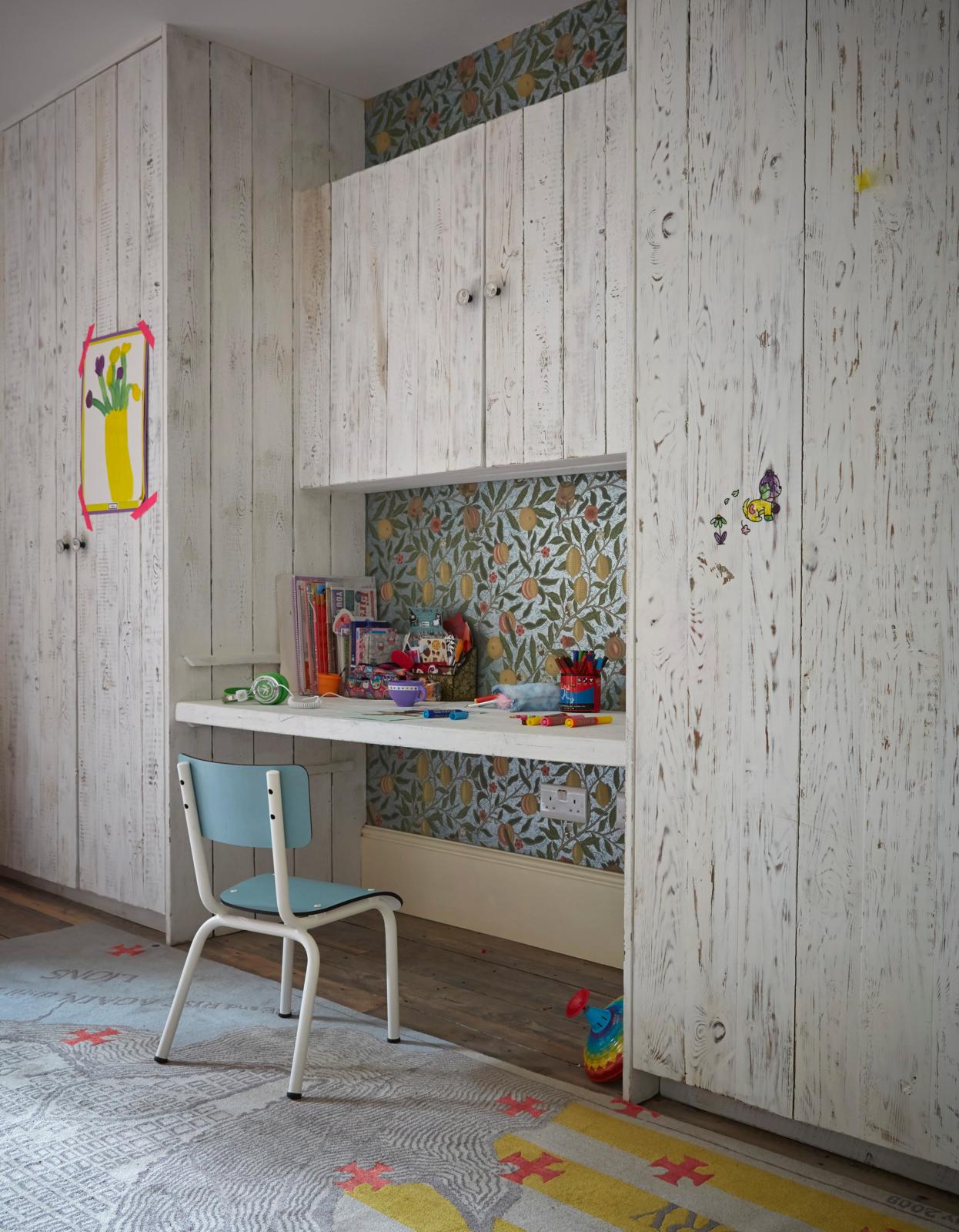
Whether you're designing a teenage bedroom, or adding in a play space for younger children, a built-in desk is often the most efficient use of space. It can help fill an awkward gap, and makes sure every square inch of space is used, built bespoke to your measurements.
This design highlights a clever way that you can build a desk in between two closets, meaning no legs and therefore less clutter under the desk.
the trick to ensure the room is always tidy is with lots and lots of storage. Usually, adolescents are averse to nagging and constant disciplining. The best you can do is to provide them with opportunities that allow them to be neat.
The fitted floor-to-ceiling storage is also a plus for a kid's space, saving room and giving the design a neater finish. The closed shelves will hide all the mess of a kid's room inside. These cabinets in distressed wood add warmth and coziness to the room, while the wallpaper in the middle ensures the room has youthful, colorful appeal.
5. Pick a color scheme that will help focus
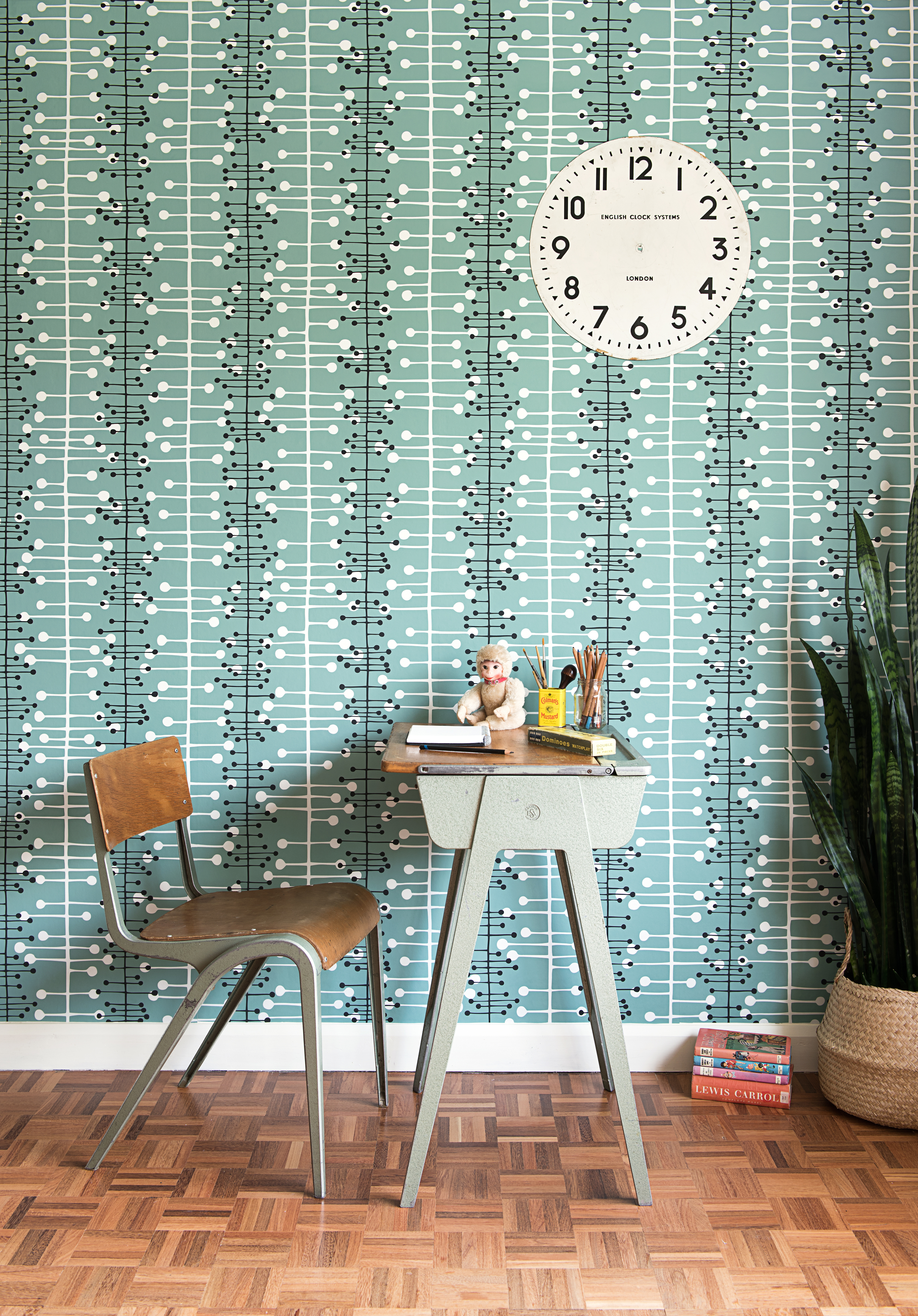
'A child’s study room should maintain a tranquil ambiance and keep them calm and focused during homework tasks,' says Rebecca Drury, co-founder of MissPrint.
'Using colors and patterns on their walls can prompt a creative and innovative environment for young minds to grow in. Soft colors of blue and green are also great to promote calmness as well as intellectual thinking, and when furnished by natural materials and plants can create a mindful space.'
6. Convert a room into a study space temporarily

'This space is located in what would normally be the formal dining room of the home,' explains Alanna Dunn, an interior designer at Reena Sotrupa In House Design Group. 'Given that our clients were more casual entertainers and that their children were so young, they opted to use this space as a study room until the children grew a bit older. This is the reason the space has such a beautiful coffered ceiling. In a few years, the time will come to convert it into a dining room again.'
A blackboard in the room makes the space more interactive without resorting to bolder interventions for kids in the room that would be harder to reverse.
7. Use chalkboard paint to jazz up the study room
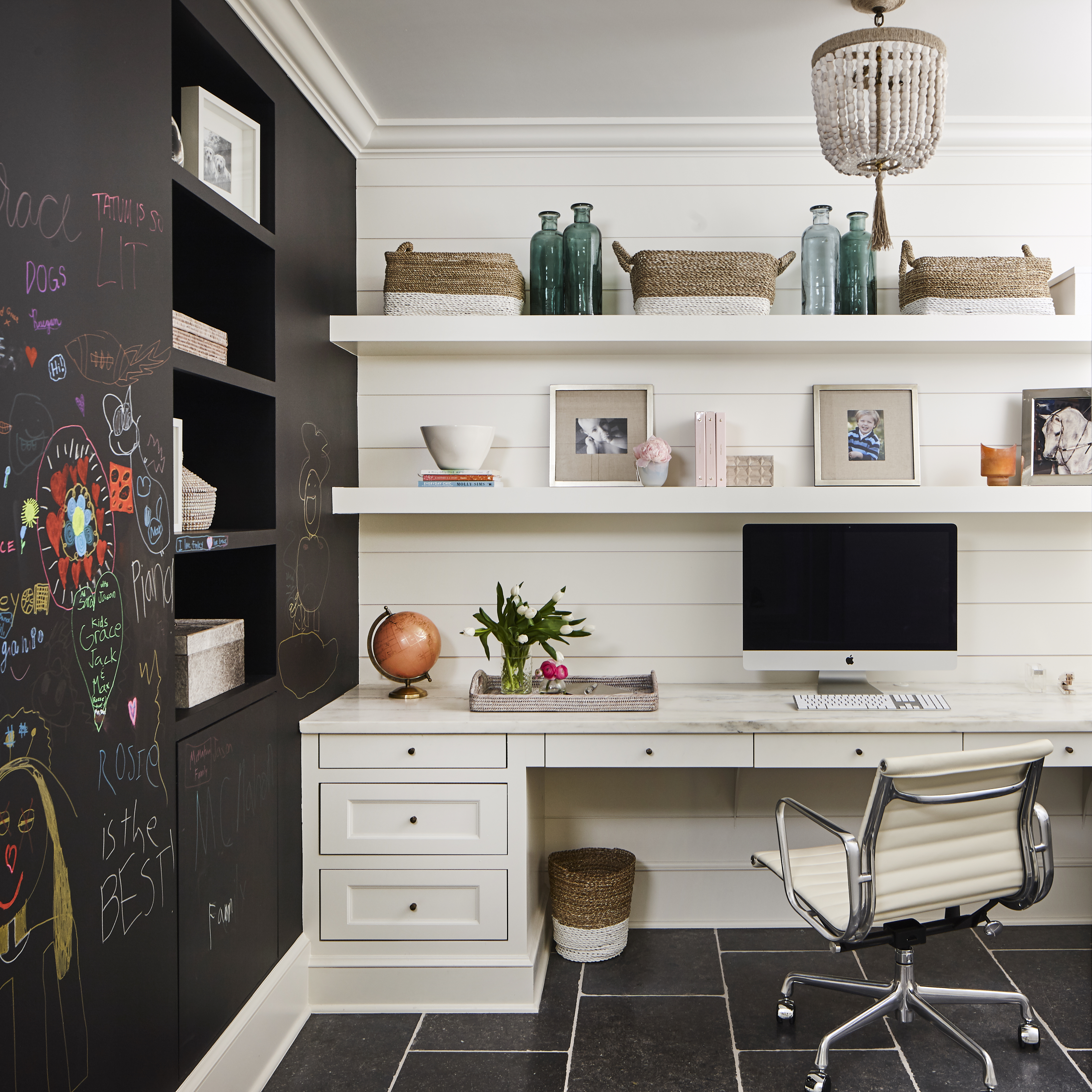
What would make a kid happier than having a wall in their room to draw on, without getting into trouble? For fun kids room paint ideas, cover an entire wall in chalkboard paint or simply hang a framed chalkboard and let the creativity begin.
Having a chalkboard wall next to the study will allow the kids to take their work beyond pen and paper, and create a more school-like study environment indoors. Plus, if you have two children, one can teach the other using this wonderful tool. This wall can also double as an art space, where the kids can display their creations proudly.
If you're up for it, you can paint a chalkboard wall yourself without professional help. Choose the wall and paint it in a dark-tinted primer. Interestingly, you don't always have to go for a black chalkboard. Today the market has pink, green, yellow, and blue chalkboard paints too.
8. Go for open storage so kids can see what they have

Design-wise, whether it's the kids closet or the study area storage, if you are going for open cubbies, make it a colorful display. Add plastic storage boxes for smaller pieces, such as Legos and puzzles, and do interesting color blocking with toys and books.
'When it comes to designing this space, I caution about hiding the stuff away,' says interior designer Jennifer Morris. 'In my personal experience, anything behind a door will collect dust and be forgotten. So I lean toward open shelves with bins that are easy for everyone to pull out. I am big on reading so I love adding a library to any place.'
9. Add versatile seating for any task at hand
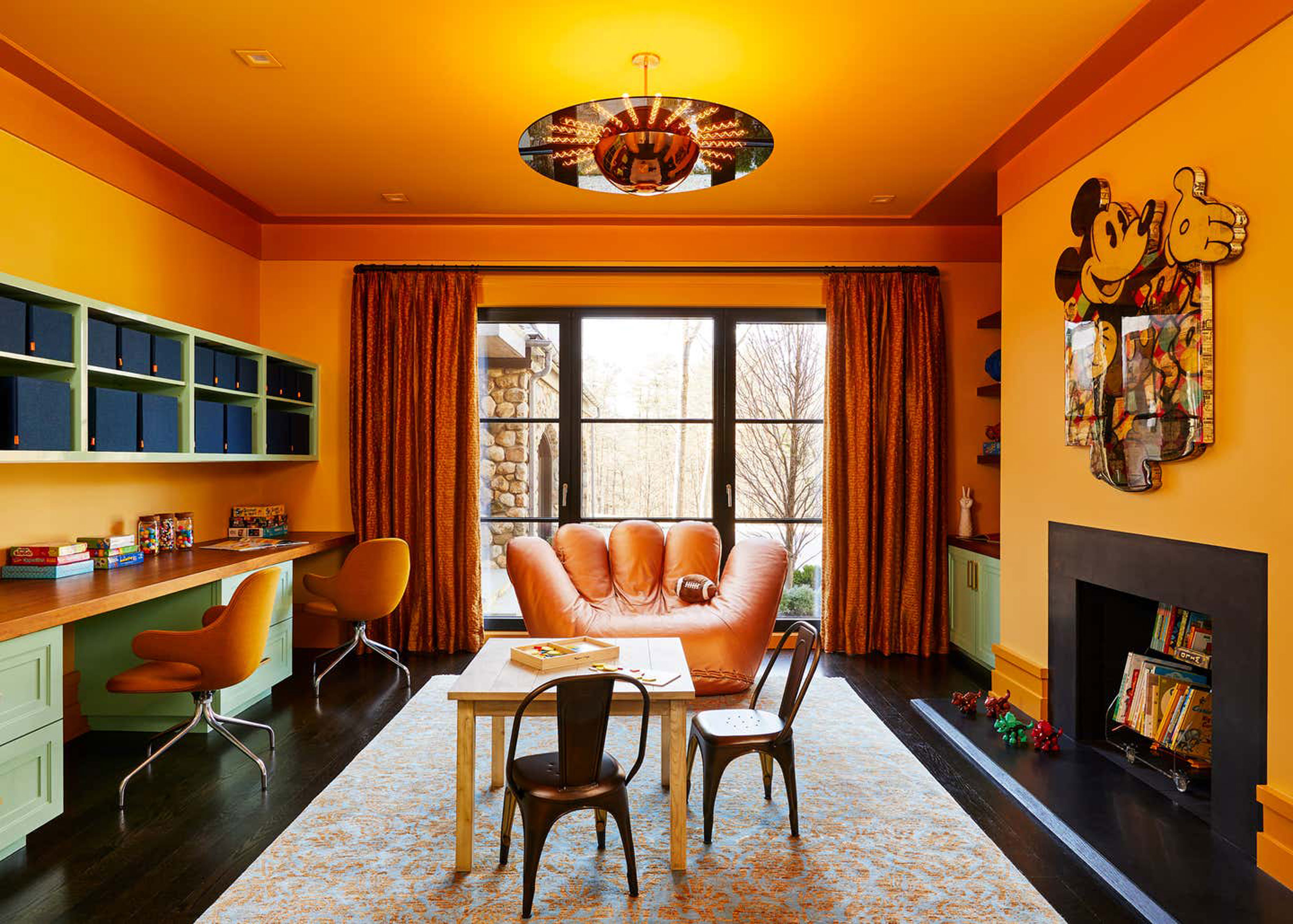
If a kids study room isn't comfortable to use, then guess what? They won't use it. Just like home office ideas, ergonomics are key, but none more than ensuring you have the right seating for the right task.
In this bright kids study room by architecture and design studio Evan Edward, there's desk seating for structured homework time and using a computer screen, while a giant baseball mitt chair is the perfect reading nook. A smaller table in the center of the room is better suited for collaborative tasks and playtime, making this design a real workhorse for keeping the kids busy at home.
10. Dedicate an entire wall to a study area
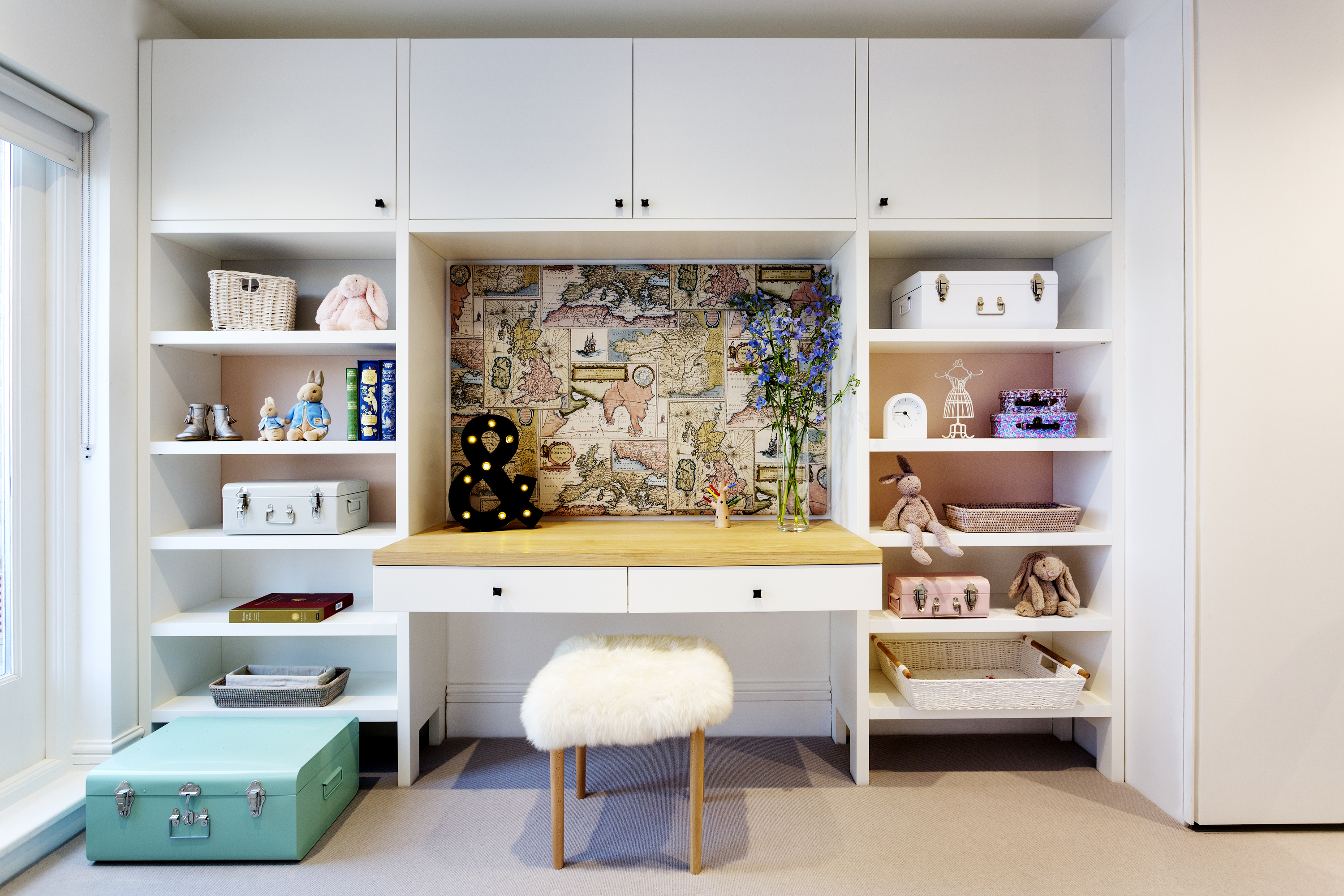
In a modern bedroom for kids, dedicate an entire wall to a study table and maximize the space for homework, play, and storage. While an entire unit on a wall can seem bulky and make the interiors feel heavy, paint it white and let it merge with the walls to ensure it doesn't weigh down the room's visuals.
It's best to have open and close storage cubbies. Use the open shelves for everyday items like books, notebooks, and stationery and the closed ones for large items like school bags, encyclopedias and other knick-knacks.
Create a weekly ritual for the child to rearrange or tidy up this entire unit so that he/she/they know what goes where. To add color, consider adding a world map in front of the study, so it's both educational and design-savvy.
How do I set up a small study room?
Add a reading light for evening or night-time studying. Ideally, this space should have one overhead light and one desk lamp. If the child is using a laptop or Kindle, make sure the light's glare isn't falling on the screens.
If the space is less or if you have a shared kids' bedroom, choose floor-to-ceiling storage so all their things can go inside in a tidy manner. Consider open and closed shelves so the best of things – LEGO sets, thick volumes, or vibrant art can be displayed openly while the mess can go inside the closed units.
Introduce a few fun elements close to the study desk or within the room so the child doesn't feel bored or jaded in the room. These elements will ensure the child doesn't keep running outside during study breaks but re-energizes inside the room. You could suspend a swing, a hammock, or add a monkey ladder.
How do I set up a study space without a desk?
Don't have a desk or space for one? Use your creativity! Use an unused closet in your room, and turn it into the perfect study nook. Install a wall-mounted desk that folds up when not in use. You could even use a plank of wood that’s at least two feet long and 18 inches wide and attach it to the wall using shelving materials.
You could bring in lap desks although should be used only on rare occasions as they don't have the best ergonomics.
How do I design a study space for teenagers?
Whether it's a teenage girl's bedroom or a teenage boy's bedroom, you need to think differently when it comes to designing their study area. Having gone past the kiddy age of toy chairs and overly bright desks, these young adults require a more serious space that is as functional as it is smart.
Take their suggestions into consideration before you go setting up this area. It's a good idea to perhaps visit a furniture store to see which chair would be the most ergonomic for them; the same for desks. If you already have a lovely, ornate console at home that you don't use, you could place it in your child's room to give the interior a big personality.
Accessorize the area with pop art (what is your child into these days?). You could even add a pegboard next to the desk so he/she/they can pin up notes, pictures, and more to personalize the area.

Aditi Sharma Maheshwari started her career at The Address (The Times of India), a tabloid on interiors and art. She wrote profiles of Indian artists, designers, and architects, and covered inspiring houses and commercial properties. After four years, she moved to ELLE DECOR as a senior features writer, where she contributed to the magazine and website, and also worked alongside the events team on India Design ID — the brand’s 10-day, annual design show. She wrote across topics: from designer interviews, and house tours, to new product launches, shopping pages, and reviews. After three years, she was hired as the senior editor at Houzz. The website content focused on practical advice on decorating the home and making design feel more approachable. She created fresh series on budget buys, design hacks, and DIYs, all backed with expert advice. Equipped with sizable knowledge of the industry and with a good network, she moved to Architectural Digest (Conde Nast) as the digital editor. The publication's focus was on high-end design, and her content highlighted A-listers, starchitects, and high-concept products, all customized for an audience that loves and invests in luxury. After a two-year stint, she moved to the UK and was hired at Livingetc as a design editor. She now freelances for a variety of interiors publications.